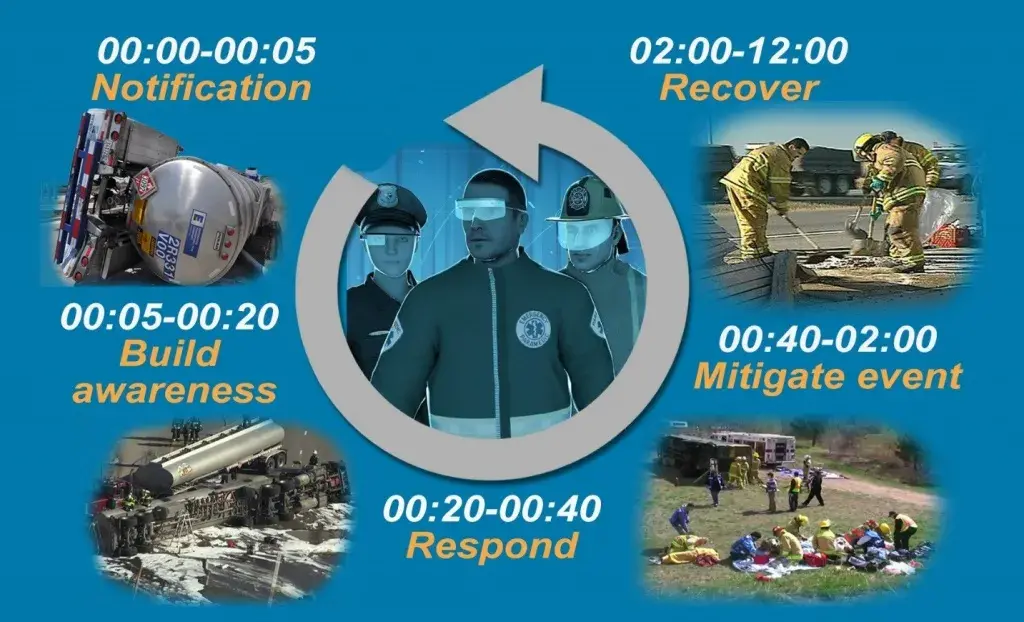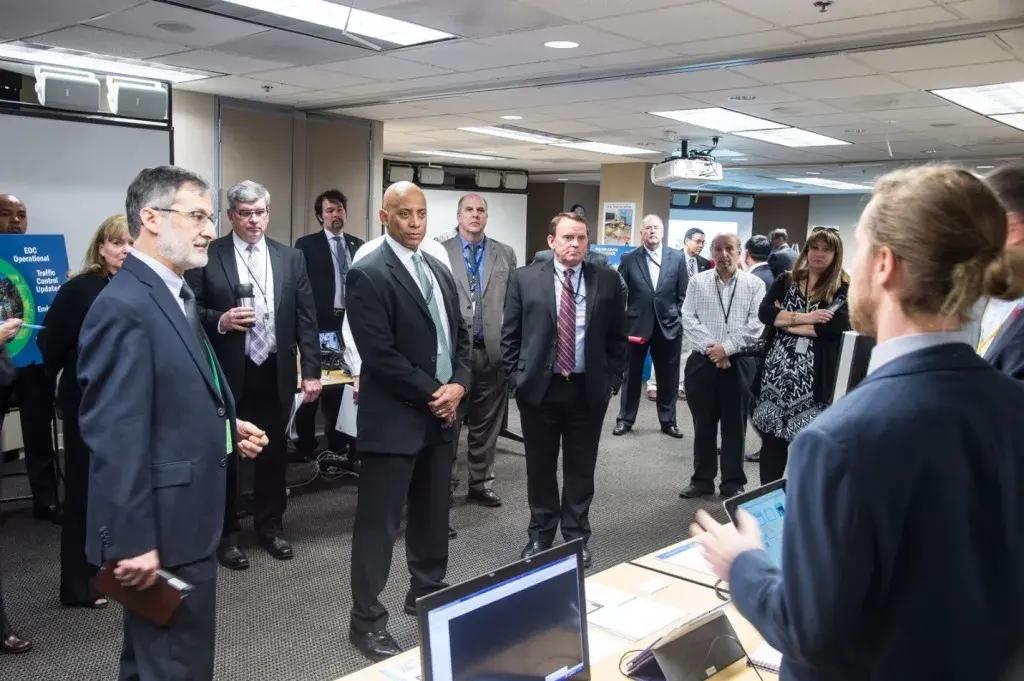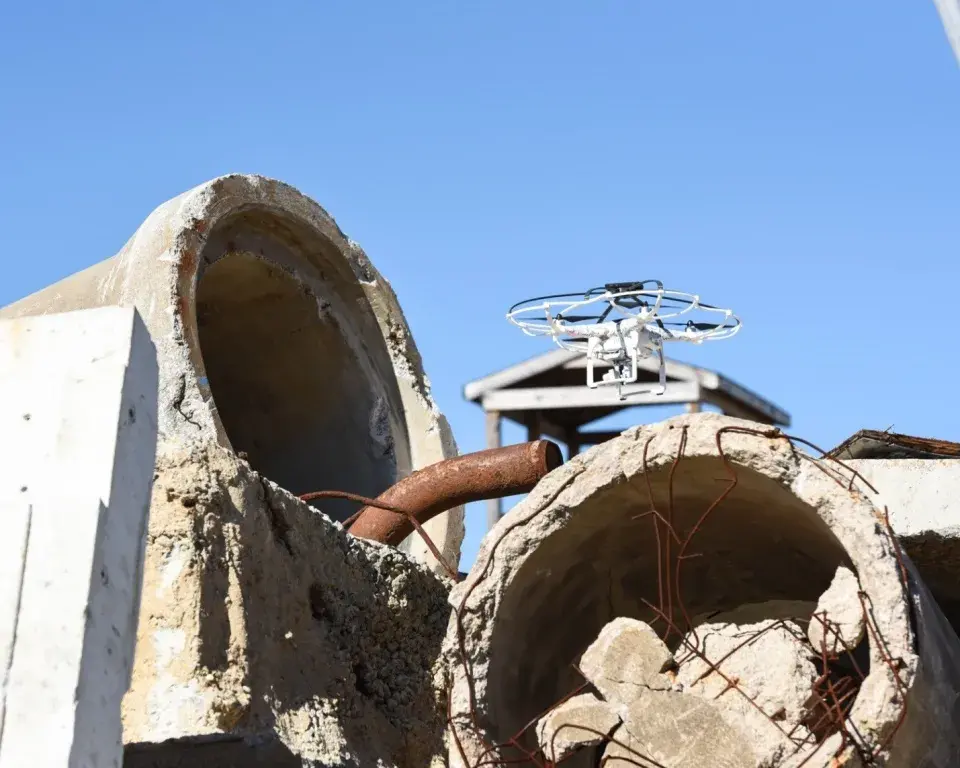Information Application and Standards (IAS) is a cross-cutting division within the Department of Homeland Security (DHS) Science and Technology Directorate (S&T) that aims to apply open standards to the technologies responders use in the field daily. Previously a part of the Office for Interoperability and Compatibility (OIC), IAS was established in 2014 to bring more attention to information sharing, which has become a critical issue for first responders.
The number of devices and applications used by first responders varies greatly and is often limited by proprietary data exchange formats, which reduces device interoperability. As innovation and the number of devices increase, the stand-alone approach of simply adding on another device is no longer practical or affordable. Interoperability between devices and the information data flows they generate is necessary to ensure first responders are protected, connected and fully aware.

One of the primary goals of the IAS is interoperability of first responders’ devices. Interoperability is the ability to transfer and use information in a uniform and efficient manner across multiple organizations and information technology systems.
It is the ability of two or more systems or components to exchange information and to use the information that has been exchanged.
Interoperability cannot occur without the advancement of open standards applied to these devices and their information exchanges. One of the questions IAS is trying to answer is, “How can open standards increase the spread of knowledge?
Open standards are specifications for interfaces and encodings enabling interoperability between processing systems from different developers, whether employed by proprietary product vendors, independent integrators, application developers or open source projects.
In general, open standards can be seen as having the following elements:
- Freely and publicly available – They are available free of charge and unencumbered by patents and other intellectual property.
- Non-discriminatory – They are available to anyone, any organization, anytime, anywhere with no restrictions.
- No license fees – There are no charges at any time for their use.
- Vendor neutral – They are vendor neutral in terms of their content and implementation concept and do not favor any vendor over another.
- Data neutral – The standards are independent of any data storage model or format.
- Defined, documented and approved by a formal member driven consensus process. The consensus group remains in charge of changes and no single entity controls the standard.
FRG is working with industry to advance open standards for its first responder technology. It is critical for first responders to have a standards-based system to facilitate information exchange and coordination in times of emergencies among the police, firefighters and emergency medical personnel during emergencies.
Internet of Things Pilot Program
IAS and its partners, such as the Integrated Justice Information Systems (IJIS) Institute and the Open Geospatial Consortium (OGC), are developing solutions based on open standards to integrate first responders’ tools and applications through an Internet of Things (IoT) pilot project. The goals is to ensure multiple response teams are on the same page despite varying communications equipment.

FRG’s IoT pilot phase I demonstration took place in January, 2016 with the participation of S&T senior leadership.
Launched in August 2015, IoT pilot phase I aimed to demonstrate open system sensor integration for emergency and disaster response. Fast and secure integration of information from diverse information sources plays a key role in responding to emergencies and disasters. The number of these information sources grows rapidly, but the value of all these information sources depends on the ability of first responders’ applications to detect their existence, know their state, locations, descriptions, software interfaces and access rules and to integrate the information coming from the sources.
A real-world scenario for the pilot was created in collaboration with first responders. The scenario depicts an incident in which fire, law enforcement and emergency medical units must deploy, discover and integrate diverse sensors and platforms to gain situational awareness. Use cases in the scenario reveal specific interoperability requirements.
 A technical demonstration of the phase I pilot was held in January 2016. It showed how the project is designed to integrate and exchange data from a variety of proprietary sensor types, including: Smart shirt and SmartWatch (physiological monitoring), vehicle geospatial position (location and orientation), mobile video cameras, laser rangefinder, plume model and others.
A technical demonstration of the phase I pilot was held in January 2016. It showed how the project is designed to integrate and exchange data from a variety of proprietary sensor types, including: Smart shirt and SmartWatch (physiological monitoring), vehicle geospatial position (location and orientation), mobile video cameras, laser rangefinder, plume model and others.Before the end of 2016, the IoT pilot project aims to focus on integrating the sensor technologies with a communication hub as part of S&T’s Next Generation First Responder (NGFR) Apex Program.
Image: A small unmanned aerial vehicle flew through a collapsed building to help search and rescue teams during a demonstration in Lorton, VA on October 19, 2015.
Next Generation First Responder: New technology helps first responders save time and lives
To support first responders who risk their lives for their missions, it is important to constantly examine the applications of existing technologies to enhance their capability and protection. IAS is supporting the NGFR program by exploring and prototyping hardware and software systems in three mission areas: connectivity, risk reduction and situational awareness. IAS is working with Massachusetts Institute of Technology Lincoln Laboratory (MIT LL) to develop and demonstrate functional prototypes that integrate with the standards and systems identified by NGFR architects and leads.
In 2015, IAS and MIT LL held multiple demonstrations where responders leveraged the Next-Generation Incident Command System, or NICS, a web-based situational awareness and decision support tool developed by MIT LL in partnership with S&T.
During a demonstration in Lorton, Virginia, on October 19, responders were equipped with a collection of health status sensors that monitor a responder’s heart rate, breathing rate, skin temperature, stress levels and more.
In a real time incident scenario, responders tested potential prototypes such as the Signal Location via Exterior Drone (SLED) to locate people in an unknown indoor environment. SLED is a small unmanned aerial vehicle equipped with a Wi-Fi sensor. By flying the drone to a variety of locations, the cell phone’s Wi-Fi signal can be sampled and characterized in space. This information is then used to identify the location of the phone.
CAUSE: Partnership Beyond the Border
The Canada-U.S. Enhanced Resiliency Experiment (CAUSE) series is a recurring border region communications interoperability experiment in collaboration with S&T, Defense Research and Development Canada Centre for Security Science (DRDC-CSS) and Public Safety Canada. The objectives of the CAUSE series are to explore how to build a binational communications interoperability capability and to connect, test and demonstrate the emerging operational technologies available between the two countries. The CAUSE series support the United States-Canada joint Beyond the Border Action Plan (BTB), a group charged with developing and facilitating multi-jurisdictional and cross-border interoperability.
Border region responders have limited shared situational awareness, communications interoperability and operational capability to effectively collaborate during a cross-border incident.
Planners met in 2015 to craft an emergency scenario for CAUSE IV. The CAUSE IV experiment will take place between Port Huron, Michigan and Sarnia, Ontario, on April 26-28, 2016. The Blue Water Bridge, the second busiest crossing between the U.S. and Canada, will serve as the primary site of the emergency scenario. The experiment will consist of two crucial parts.
The first part will test the interoperability of paramedic and health services by fielding cross-border broadband and wireless networks that examine voice communications, electrocardiogram tracing, live video, patient records and overall situational awareness (such as vehicle tracking) over the course of the emergency scenario.
The second part of the experiment will pilot a binational capability to automate and link models that currently operate independently for alerts, situational awareness, citizen engagement and mutual aid planning efforts. These benchmarks will be part of an integrated and semi-automated process and capability enabling emergency managers to more precisely and efficiently work together.
The lessons learned from CAUSE III are also vital to further knowledge on public alerting and the use of digital volunteers to leverage social media content. The CAUSE III Northeastern Scenario After-action Report was released in June 2015.
Conclusion
With major projects underway and so many achievements within the last year, IAS is looking forward to a very busy but productive 2016. The IoT pilot project phase II is developing under the important partnership with OGC and IJIS. IoT is also an integral component of OIC’s NGFR Spiral 1 and Spiral II, which will take place in 2016. Spiral 1 and Spiral 2 demonstrations are integration events which will highlight the ways various technologies can come together to improve communications and situational awareness among first responders. CAUSE IV is also around the corner with exciting outcomes, and MIT LL is hard at work to contribute to NGFR’s vision.
Stay tuned to IAS in 2016 to keep up with all the good work done by our partners, performers and staff members.
Last Updated: 01/12/2023
